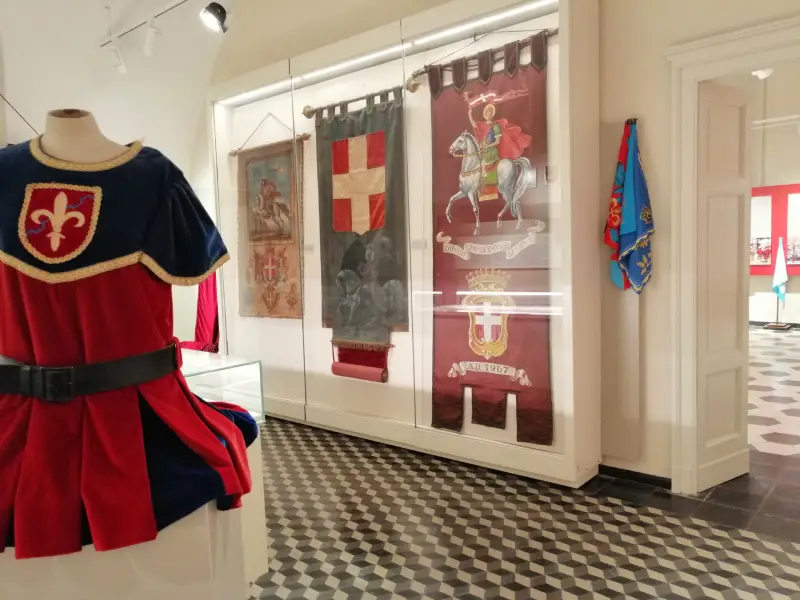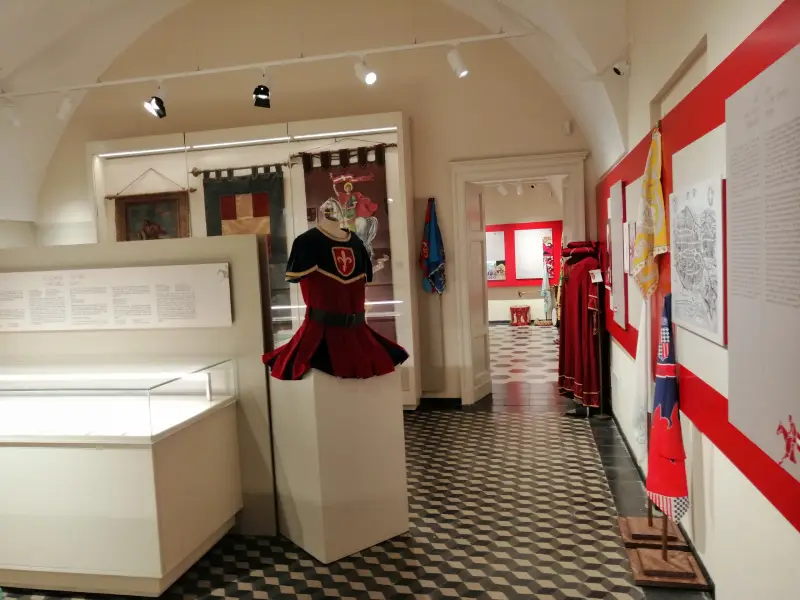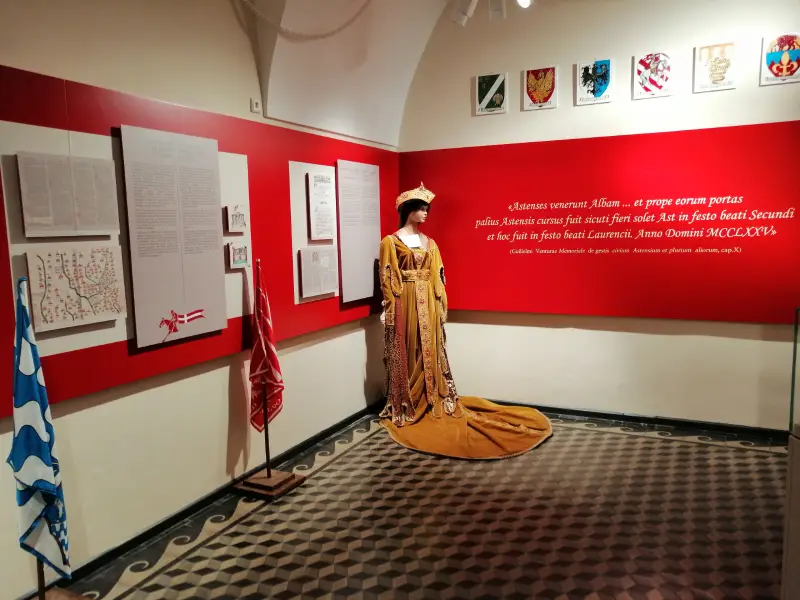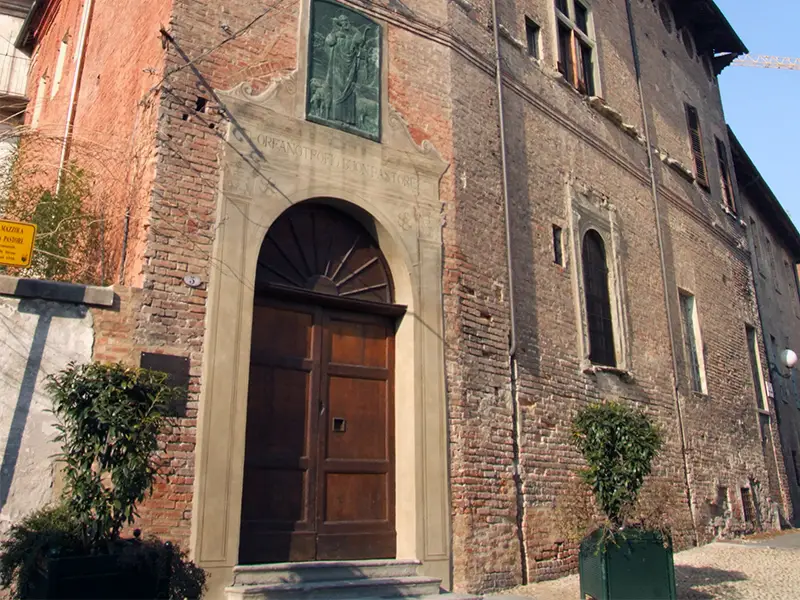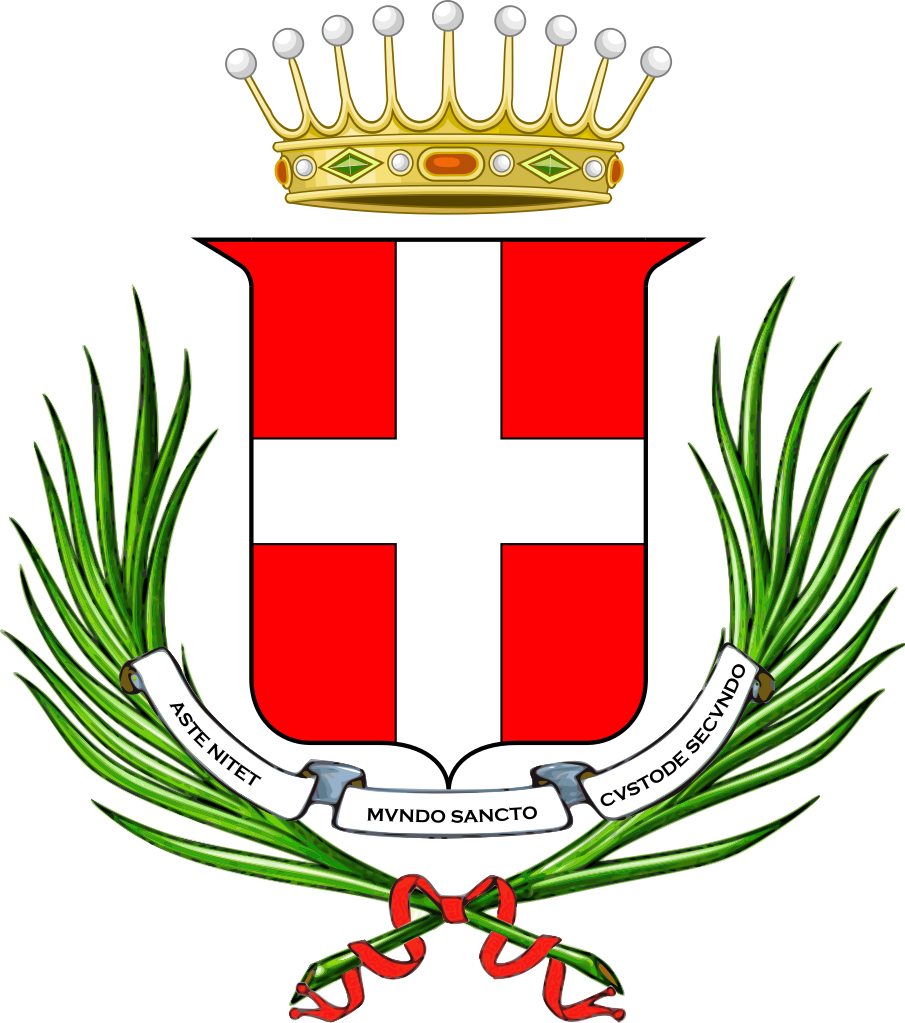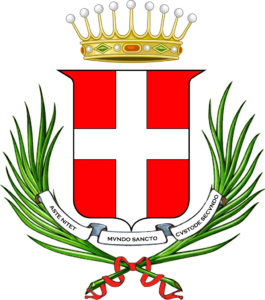Rare example of Renaissance architecture in Asti
It houses the Archivio Storico del Comune di Asti (Historical Archive of the Municipality of Asti)
In its rooms, it is possible to visit the Museo del Palio di Asti (Museum of the Palio of Asti)
Palazzo Mazzola
Palazzo Mazzola presents itself to the visitor through its Renaissance facies that overlooks, but never completely covers, the different souls that make up its extraordinary architecture. The medieval domus, built on a Roman settlement site, was acquired by the Mazzola family, who settled in Asti in the 15th century, and transformed by them in a Renaissance building around 1516.
Starting in 1710, the Palace became the "home" of the Opera Pia Buon Pastore, intended to house young people in danger and abandoned infants.
Unicum in the urban landscape of the city of Asti, the building includes two bodies of the house oriented east-west, with a garden to the south and a vegetable garden to the north. A monumental staircase connects the different floors and two colonnades are visible on the ground and first floors.
The architectural elements are remarkable both outside, where there are windows with decorated sandstone frames, and inside, where in addition to the valuable ancient portals and the long barrel vaults alternating with cross vaults, wooden ceilings, and frescoes of considerable value are visible.
Museo del Palio di Asti (Museum of the Palio of Asti)
Asti is a medieval city by constitution and by vocation. The Palio race has its roots in this city and has accompanied its historical development, reflecting its ups and downs.
Like the city, the Palio has undergone eight centuries of transformations and a succession of moments of glory and periods of decline, but has kept the original characteristics unaltered: the charm of competitive competition, the partisan passion, the privileged relationship with the patron saint and a great identity value.
The history of the Palio is mirrored to that of Asti, which for centuries has been recognized in the horse race, in the emotions of the participants in the field and on its edges, in the charm of an ancient collective rite. The Museum offers just that: A path dedicated to the Palio race which is also a journey through the history of the city.
The permanent exhibition rooms are accompanied by other temporary exhibitions, in which the thousand facets of the Asti Palio are shown.
Historical Archive
The Historical Archive of the City of Asti is an office at the service of the Administration that preserves the past and recent memory of the city. But it is also an authoritative research institute for the history of Asti and the territory, home to initiatives and events that involve a motivated and assiduous users.
Here is preserved all the documentation of the City, produced and received during the course of its activities over the centuries. All the documents that constitute it, from the tenth century (year 947) to the twenty-first century, can be consulted.
Among the most important artifacts are the precious medieval manuscript codes (including the Codex Astensis and Codex Statutorum) decorated with extraordinary miniatures, the high and low-medieval parchments embellished with seals, public deliberations from the fourteenth century, the cartographic background from the seventeenth century.
The Archive also preserves the aggregated archives of the suppressed municipalities and now fractions of Asti, as well as some private archives of high historical and cultural value. Of great importance is the collection of posters, once tiletti and shouts, made from the sixteenth century.
A qualitatively and quantitatively significant nucleus of the institute is represented by the Photo Library - of which there are also deposits and donations - which collects over 300,000 phototypes. From the second half of the nineteenth century to the present day, you can see images of war, but also of characters, environments and events of different historical periods.


